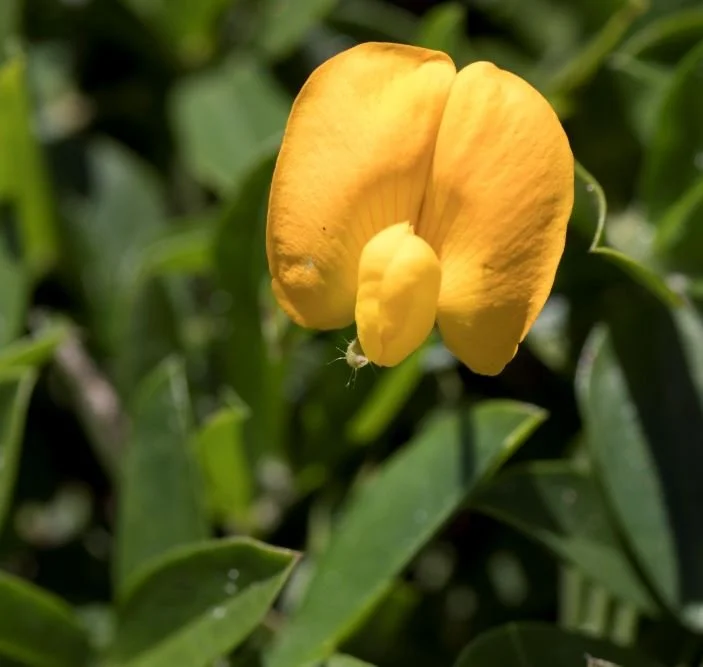NICK’S PICK: PERENNIAL PEANUT, A LOW MAINTENANCE LAWN ALTERNATIVE
We are excited to feature one of our favorite plants to use in home landscapes, one of Florida’s staple ground covers, rhizoma perennial peanut (Arachis glabrata). Native to South America, this plant was introduced here as a potential foraging/grazing crop in the 1930s. It’s often utilized as an alfalfa substitute in producing commercial hay.
For landscaping, perennial peanut works as a lower-maintenance lawn substitute. It’s hardiness and cost make it an ideal grass alternative. (According to UF scientists, the annual cost of a perennial peanut lawn is half that of St. Augustine grass.) Not only is Arachis glabrata drought, pest, and semi-salt tolerant, but this plant is also more visually appealing than traditional grass. Perennial peanut produces beautiful little yellow blooms a couple inches taller than its leaves. This edible flower has a peppery taste and can be a great salad garnish. To be safe, avoid foraging for any flowers treated by pesticides or located in a highly trafficked/polluted area. While edible for humans, animals and pollinators can also take advantage of this Florida friendly fauna.
Great news! According to the American College of Allergy, Asthma & Immunology, perennial peanut has an “advantage over the common peanut in that it grows from rhizomes that spread underground. The peanut plant used to grow peanuts, on the other hand, produces legume pods underground that become the ground nuts that are used for food. Since the ornamental variety does not produce such pods, there is no risk that the plant would lead to an allergic reaction even if it is dug up. Additionally, peanut allergens are not found in the foliage of peanut plants. Therefore, feel free to plant ornamental peanuts, enjoying the flowers and fullness of the ground cover without the worry of peanut allergic reactions.”
Care of PERENNIAL PEANUT
Because perennial peanut is within the legume family, it’s nitrogen-fixing and requires less fertilizer. It requires low herbicide use as well. Maximum height depends upon breed. While mowing is not required, it can encourage plants to grow more flowers. As with all plants, it needs regular watering when first put in the ground. Once established, perennial peanut requires minimal irrigation.
While the plant prefers full sun, it can manage in partial shade. Perennial peanut can freeze back in the winter, so be aware if you want green year round. It can be interplanted with other ground covers for an eclectic yard.
Some kind of edging is beneficial if you’d like to keep it cleanly contained, it’s best planted in a low traffic area. If there’s going to be a lot of foot traffic, some stepping stones can help keep perennial peanut from getting trampled.
Other Readings:
http://www.perennialpeanuthay.org/documents/fl_fact_sheet_08.pdf
https://gardeningsolutions.ifas.ufl.edu/plants/ornamentals/perennial-peanut.html


